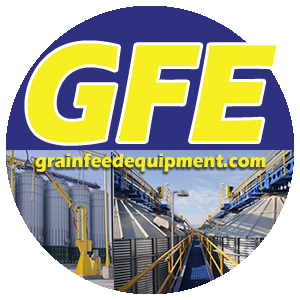Old open belt conveyors (left)at General Mills’ Soo terminal in Minneapolis, MN have been replaced with new Warrior 15,000-bph drag conveyors (above). Photos courtesy of General Mills.
Over the past couple of decades, it seems like grain elevators from coast to coast have been scrambling to adopt the latest technologies for moving grain from one part of a facility to another.
One exception has been at the big grain receiving terminals in one particular area – using open belt conveyors running through old-style Texas galleries upstairs and below-ground tunnels downstairs.
Over a three-year period starting in 2016, managers of General Mills’ “Soo” oat-receiving terminal on 49th Ave. N. in Minneapolis, MN (763-293-3700), have replaced open belt conveyors with nine drag conveyors (three per year). These conveyors came in a variety of lengths ranging from 36 feet (13.5 degree knee) to 144-1/2 feet (1.5 degrees).
“We replaced open belts primarily for safety,” says Mark Fedje, manager of the 4-million-bushel-plus elevator. “These belts were moving at 700 feet per minute or more. We had employees standing on top of trippers that were manually-operated. Also, they were 3 or 4 feet off the ground, so there’s the fall hazard. And there was always the problem of dust in the air with the open belts.”
There also was the issue of efficiency. “We can unload two more railcars per hour with drag conveyors,” Fedje notes. “Guys don’t have to leave the control room to set the trippers.”
Conveyor Selection
To select a drag conveyor for the upgrade, Fedje and colleagues at General Mills visited with manufacturers at GEAPS Exchange. The team chose 15,000-bph drag conveyors built by Warrior Mfg. LLC, Hutchinson, MN (320-587-5505).
“They seemed like they had made improvements over other conveyors on the market,” says Fedje. “They were using stronger materials and more heavy-duty construction. And they were good about fixing problems when they happened.”
Among the features of the Warrior en-masse (drag) conveyors:
- The conveyors are hot-dipped galvanized construction. This includes seven-gauge head housing and 10-gauge tail housing. Ten-gauge side panel construction is standard.
- Heat-treated welded steel chain is standard. The head section includes a slack chain and chain break safety switch. The chain selection is matched to each application to ensure long-term service.
- Concentric locking pillow block bearings are designed to prevent bearing slippage on the shaft.
- A diaphragm plug switch located in the head discharge, when activated, shuts off the motor to prevent potential damage.
- The conveyors come in standard 10-foot sections.
- A variety of optional AR steel liner packages are available.
- All components are pre-assembled prior to shipment with the chain shipped installed in each section. There are no fasteners in contact with the product stream.
Over the three-year transition period, installation of the new conveyors at the Soo terminal was handled by two contractors: Yale Mechanical, Minneapolis (952-884-1661), and McCormick Construction Co. Inc., Greenfield, MN (877-554-4774).
In the meantime, Fedje says, General Mills has been very pleased with the Warrior conveyors. “The only problem we ran into were some limit switches that failed in cold weather, and Warrior replaced them immediately, and we haven’t had the problem since.
“Using these conveyors through two harvests now, we went from unloading 20 to 23 railcars a day to 40 to 45.”
Reprinted from GRAIN JOURNAL January/February 2020 Issue
One of nine new Warrior drag conveyors installed in Minneapolis, this one on the rooftop.



